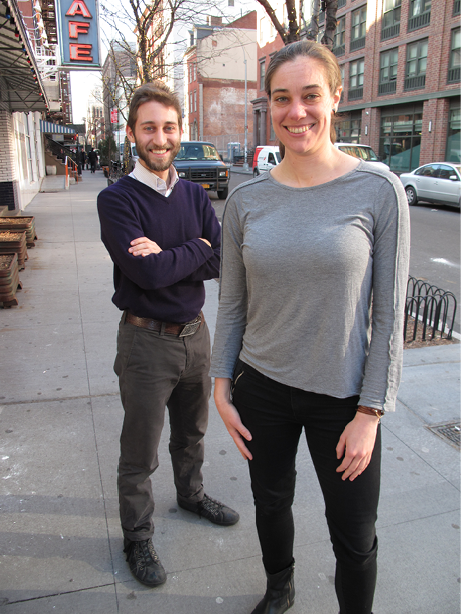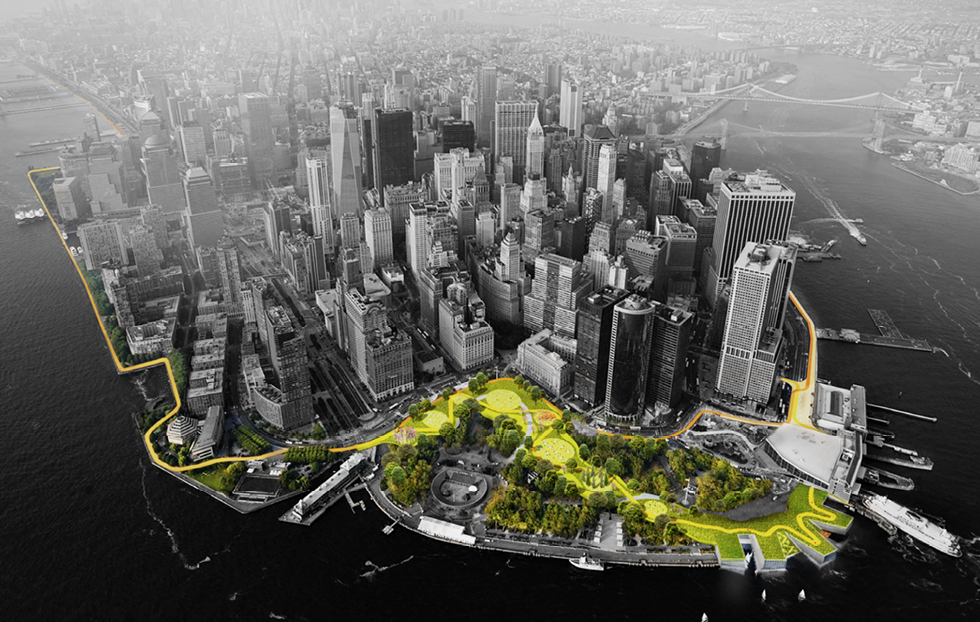
By journalist, Rosemarie Lentini

Helen Lochhead, Deputy Government Architect, NSW Architect’s Office
For Australian architect Helen Lochhead, building resilience to disasters involves ‘building back better’.
As Deputy Government Architect in the NSW Architect’s Office and, before that, Executive Director of Place Development at Sydney Harbour Foreshore Authority, Ms Lochhead has spearheaded design-based resilience strategies for renewing urban environments.
She believes designers can not only help governments and communities plan for, and rebuild after, major disasters, but also initiate better solutions that build long-term urban resilience.
‘It’s not just about what you do, but how you get it done and the mechanisms to enable that. Oftentimes, there is a frustrating focus when disaster strikes on simply rebuilding what existed before. That isn’t viable. We should be focusing on how we can get more systemic change by bringing together governance, policy and the visionary and technical know-how of designers as well,’ she said.
Ms Lochhead believes such coalitions are possible, pointing to her research on the Rebuild by Design competition in the United States.
As a 2014 Lincoln/Loeb Fellow at the Graduate School of Design at Harvard University and the Lincoln Institute of Land Policy, Ms Lochhead gained privileged access and insight into the Rebuild by Design process.
Rebuild by Design was a regional design competition launched by the U.S. Government in response to Hurricane Sandy, one of America’s most devastating natural disasters.
Hurricane Sandy battered the U.S. northeast coast in October 2012, leaving 186 dead, 650 000 homes damaged or destroyed, and an estimated $US65 billion recovery bill. It also exposed the inherent vulnerability of coastal cities to extreme weather events. In New York, for example, scientists predict a sea level rise of up to 45 centimetres by 2050.1
For the U.S. Federal Government, Hurricane Sandy was an opportunity to promote resilient rebuilding through innovative ideas.
In December 2012, President Barack Obama created the Presidential Hurricane Sandy Rebuilding Task Force. The task force was led by the Secretary of Housing and Urban Development, Shaun Donovan, and made recommendations for the sustainable investment of approximately $US50 billion in federal recovery funds.2
The task force aimed to align funding with local needs, coordinate the efforts of multiple tiers of government, and build community resilience to future storms.
One of the task force’s recommendations was the creation of Rebuild by Design.
Multidisciplinary teams from around the world competed for federal funding to stormproof the Sandy-affected regions of New York and New Jersey. 3
Rebuild by Design senior project manager Alexis Taylor said the competition, which launched in June 2013, harnessed the cutting-edge ideas of experts such as designers, architects, engineers, emergency managers, sociologists and geologists, for innovative, sustainable solutions.

Rebuild by Design senior project manager Alexis Taylor and communications manager Joshua Bisker.
‘The problems that came out of Hurricane Sandy were so complex that we couldn’t posit that we have just one single problem that you address through your design. The complexity of the problem demanded an interdisciplinary, design-based, community-driven approach.
‘It was many, many decades of planning decisions that led to a lot of underlying vulnerability in New York and New Jersey. Hoboken was 90 per cent under water during and after the storm. It used to be an island. There had been rivers and patterns for natural water movement. But because we created a different environment it was filled in like a bathtub during Sandy. The water had nowhere to go because of the way the city had been built,’ Ms Taylor said.
From 148 teams that applied, 10 were selected to develop proof-of-concept plans.
Supported by grants from The Rockefeller Foundation, a private philanthropic organisation based in New York, the teams examined critical infrastructure, ecology and water on a regional scale over several months.
They also considered governance, funding and social issues, a process involving meetings with 535 community organisations and 181 government bodies, visits to more than 40 neighbourhoods and more than 60 outreach events.
In June 2014, a jury comprising design, ecology, planning, sociology and emergency experts selected six winning design projects, plus one additional finalist project that also received funding.4
While the long-term effectiveness remains to be seen, Ms Taylor said Rebuild by Design’s legacy is the creation of a framework for community coalitions in disaster recovery.
‘The complexity of disasters requires that everyone be participating in their solution. It can’t be something that only government hands down to us because it has to do with our own awareness and culture of resilience.
‘That was one of the innovations of Rebuild by Design. It was a U.S. Federal Government-sponsored project, but the process which allowed all this community outreach was funded through philanthropy.
‘Some unexpected partnerships came together in the immediate response after Sandy, and continuing that goodwill and transition from emergency management to long-term integrated planning has been a big part of what we are navigating as well. What is the ongoing role of some of these groups and can they be institutionalised?’ Ms Taylor said.
The Rebuild by Design competition was a bold model that connected the world’s most talented designers and researchers to build community resilience. During the process, Ms Lochhead consulted with members of the design team, jury and competition stakeholders to independently assess the projects as a new approach to resiliency planning.
Ms Lochhead believes that, while the scale of Rebuild by Design probably wouldn’t be replicated in Australia, its principles – grassroots advocacy and engagement, multidisciplinary coalitions and design-led innovations – can help deliver sustainable solutions in many disaster-prone locations Australia-wide.
‘For me, Rebuild by Design is a difficult process to replicate because of the size of the investment. Not many cities would have the resources to invest in a Rebuild by Design project like New York City, which is a global hub. But what you can take away from this and replicate are the key principles and adapting the concept to fit local conditions.
‘Policy can be introduced and design projects can be developed, but unless you’ve got the enabling authorities or agencies with capacity to deliver, they just become paper projects. That means looking at the political landscape first and seeing where you might pilot a project or initiative and then seeing how you might scale up to implement it more systemically,’ Ms Lochhead said.
After more than 20 years in urban design, including her involvement with Rebuild by Design, Ms Lochhead believes a key to building urban resilience is integrating design principles into disaster planning. This will enable communities and places to not only survive, but also adapt and grow, no matter what chronic stresses or acute shocks they experience.
‘In Australia, we have robust and coordinated governance structures. We can respond to emergencies in a very coordinated and singular way, which is why Australian emergency services are so good at doing their work.
‘Australia really has a lot of resilience. But the idea of building resilience is being able to build back better, to evolve and change, to develop strategies that are protective and enable safer and faster rebound.
‘If we consciously integrate resilience strategies in our planning, design development and our governance frameworks, we will bounce back faster from disruptions like bushfires, flooding and heat waves in a way that they become hiccups rather than cataclysmic,’ she said.
The BIG U (The Dryline): a barrier around Manhattan’s southern coastline to protect homes from storm surges and provide new recreational opportunities for residents.
Hunts Point Lifelines: a coalition of community leaders in the Bronx, New York, created a working model of resilience around a regional food hub.
Living Breakwaters: a project to reduce risk, revive ecologies and connect educators to the shoreline in Staten Island, New York City.
Resist, Delay, Store, Discharge: an urban water strategy to provide coastal defence, slow down run off, direct excess rainwater and support drainage in Hoboken, New Jersey.
New Meadowlands: a project to address risks, provide civic amenities and create opportunities for redevelopment in The Meadowlands, New Jersey.
Living with the Bay: a regional plan for Nassau’s South Shore in New York that promotes the county’s best features while building community resilience.

The Big U, now known as ‘The Dryline’, was one Build by Design competition winner.
1 Miller KG, Kopp RE, Horton BP, Browning A & Kemp C 2013, ‘A geological perspective on sea-level rise and its impacts along the US mid-Atlantic coast’. Earth’s Future. At: onlinelibrary.wiley.com/wol1/doi/10.1002/2013EF000135/full.
2 Hurricane Sandy Rebuilding Strategy. At: portal.hud.gov/hudportal/documents/huddoc?id=HSRebuildingStrategy.pdf.
3 The U.S. Department of Housing and Urban Development ultimately set aside $US930 million in Community Development Block Grants funding to go towards implementation of six winning projects plus one additional finalist proposal.
4 View the winning strategies at: www.rebuildbydesign.org/winners-and-finalists.